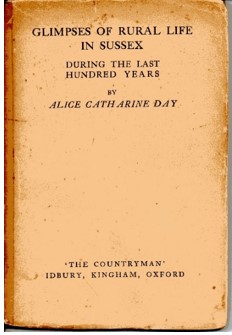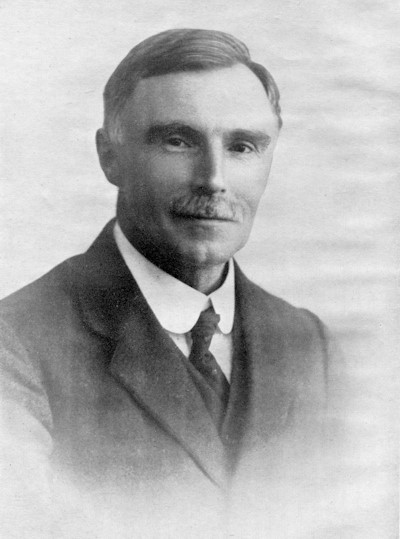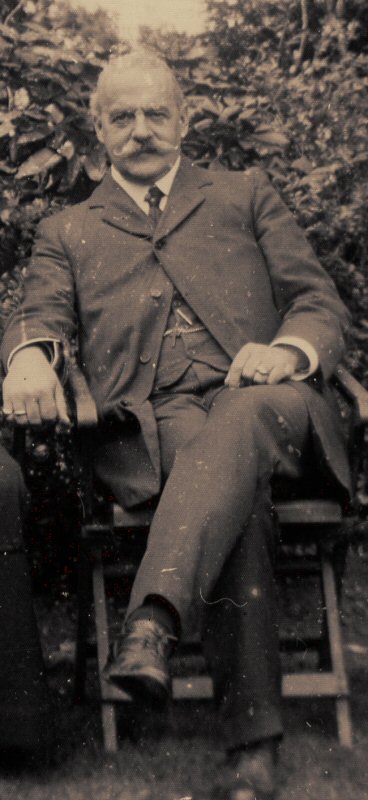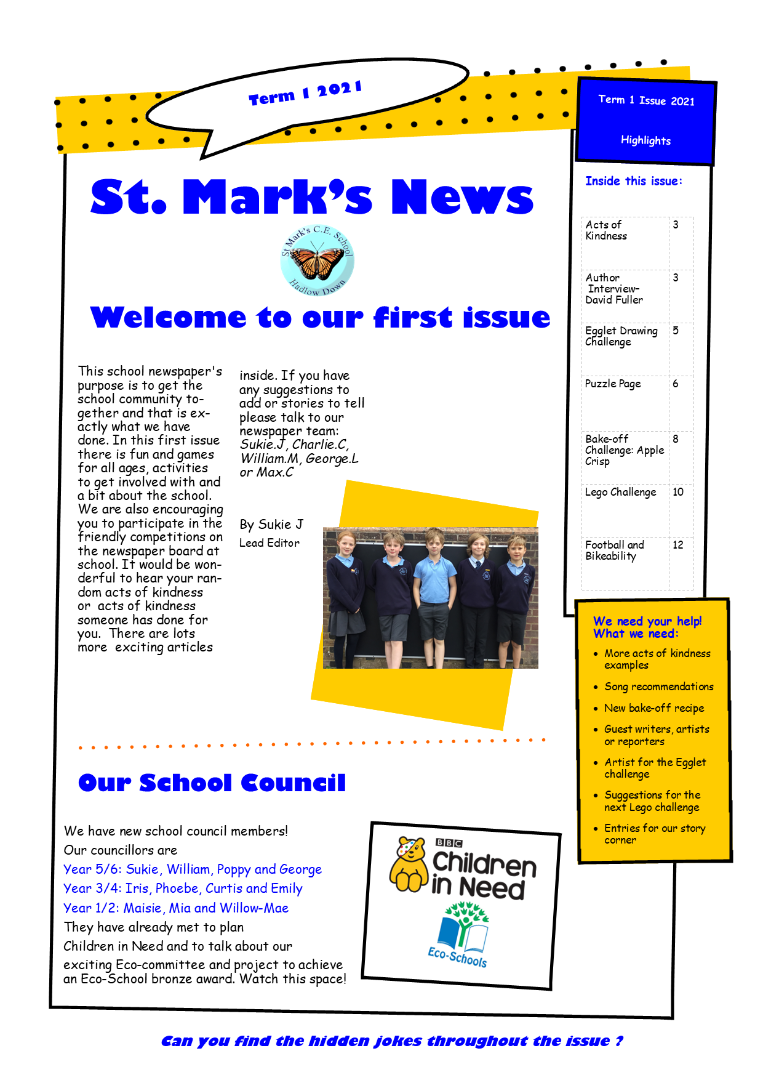 Alice Catharine Day was born in 1848 to William Day (1787 – 1849) and Anne Elliot Le Blanc (1806 – 1896) of Hadlow House in Hadlow Down which was then a part of the parish of Mayfield. She was baptized in St. Marks Church, Hadlow Down on the 26th. September 1848. Her father within a year of her being born.
Alice Catharine Day was born in 1848 to William Day (1787 – 1849) and Anne Elliot Le Blanc (1806 – 1896) of Hadlow House in Hadlow Down which was then a part of the parish of Mayfield. She was baptized in St. Marks Church, Hadlow Down on the 26th. September 1848. Her father within a year of her being born.
*Please note that throughout this article the writer has purposely used Miss Day’s correct spelling of her name Catharine spelt with an ‘a’ and not with an ‘e’.
Many Hadlow Down villagers know of Miss Day due to the reproduction of her book Glimpses of Life in Rural Sussex During The Last Hundred Years, which was first published in 1927, in the Millenium village book project of 1999. In one of her ‘glimpses’ she recalls visiting a village family in 1883, there are other dates of interviews with villagers including one in 1922 In her book she says she is ‘writing principally of my experiences among them [The Wealden People] during the years from 1874 till 1892’, as the book was published in 1927 a few years before her death at the age of 82, when compiling her book she was no doubt drawing on lots of notes made throughout her time living in Hadlow Down as well as her personal recollections as a young lady. Continue reading “Alice Catharine Day 1848 – 1930 Dec. Mini Bio”
Marmaduke Pickthall – Oct. Mini-Bio
Muhammad Marmaduke Pickthall 1875 – 1936
 Muhammed Marmaduke Pickthall lived in Five Chimneys, Hadlow Down between 1909 and c.1916/17. Electoral Roll records of 1912 show him owning one quarter of the C16 wood framed house now re-fronted with red brick and the central chimney stacks cemented over but finished with brick tops
Muhammed Marmaduke Pickthall lived in Five Chimneys, Hadlow Down between 1909 and c.1916/17. Electoral Roll records of 1912 show him owning one quarter of the C16 wood framed house now re-fronted with red brick and the central chimney stacks cemented over but finished with brick tops
Pickthall was born in Cambridge Terrace, near Regent’s Park in London on the 7th. April 1875 the elder of the two sons of the Reverend Charles Grayson Pickthall (1822–1881) and his second wife, MaryHale, née O’Brien (1836–1904). Mary, of the Irish Inchiquin clan, was the widow of William Hale and the daughter of Admiral Donat Henchy O’Brien, who served in the Napoleonic Wars, Charles was an Anglican clergyman, the rector of Chillesford a village near Woodbridge, Suffolk The Pickthalls traced their ancestry to a knight of William the Conqueror, Sir Roger de Poictu, from whom their surname derives.
Marmaduke was an English Islamic scholar noted for his 1930 English translation of the Qu’ran, (usually anglicized as “Koran” in Pickthall’s era). His translation is one of the most widely known and used in the English-speaking world. A convert from Christianity to Islam, Pickthall was also a novelist, esteemed by D. H. Lawrence, H. G. Wells, and E. M. Forster, as well as journalists, political and religious leaders. He declared his conversion to Islam in dramatic fashion after delivering a talk on ‘Islam and Progress’ on 29 November 1917, to the Muslim Literary Society in Notting Hill, West London. Continue reading “Marmaduke Pickthall – Oct. Mini-Bio”
Fellowes Prynne, George H. (2nd April 1853 – 27th May1927)
 The Church of St. Mark the Evangelist provides an impressive first view of the village as you approach Hadlow Down from the West on the A272. The person responsible for its present day imposing appearance is George Halford Fellowes Prynne (1853–1927) a Victorian and Edwardian English church architect, part of the High Church School of Gothic Revival Architecture.
The Church of St. Mark the Evangelist provides an impressive first view of the village as you approach Hadlow Down from the West on the A272. The person responsible for its present day imposing appearance is George Halford Fellowes Prynne (1853–1927) a Victorian and Edwardian English church architect, part of the High Church School of Gothic Revival Architecture.
He was born on 2 April 1853 at Wyndham Square, Plymouth, Devon, the second son of the Rev. George Rundle Prynne and Emily Fellowes. His elder brother was the painter Edward Arthur Fellowes Prynne. He also had another brother, Albert Bernard (known as Bernard), and two sisters. His father was a well-known figure in religious circles of the time, being outspoken in his support of the revival of so-called high churchmanship in the Anglican Church and espousing the views of the Oxford Movement. Continue reading “Fellowes Prynne, George H. (2nd April 1853 – 27th May1927)”
Hadlow Down Village Trust
In forming the Hadlow Down Village Trust the aim was to record the memories of the village and its people in sound, vision and print for future generations, and to preserve vital oral history and accounts of village life in the twentieth and twenty first century.
The original idea came from Eddie Westfield who felt strongly that we record this type of social history, and retain interesting documents and photographs for future village generations. The first task was to secure the wonderful archive of Peter Gillies, author of the excellent Hadlow Down: An Autobiography.
We welcome any donations of photos, documents and of course personal memories and anecdotes to add to the collection or loaned to us so that we can scan them and retain a copy.
Please contact hadlowdowntrust@gmail.com if you can help,
The Hadlow Down ABC Quiz
How much do you know about your village?
Over the coming months in 2023 The Hadlow Down Village Trust will be posting on the Village Web Site and The Village Facebook Pages alphabetical lists of people, places, events and anything else we can find in the archives concerning facts, social history, pictorial history and anything else that may be of interest to our community.
As we go through the alphabet we would like to invite and encourage any contributions for inclusion. Even if the item misses the alphabetical header issue please send it anyway as we will always have an addition and amendment list included.
Do you remember anything, have cuttings, references, pictures etc. about people, places, events that are relevant to Hadlow Down?
Just send anything via email to:
hadlowdowntrust@gmail.com
Please tell us if you would like to have any contribution acknowledged.
So, how much do you already know about Hadlow Down? The Village Trust thought it would be fun to start off with a quiz for the whole family to try and complete over the Christmas period. The answers will be published in January. A Quiz Form can be downloaded and printed off by clicking here:
Final ABC Quiz for web site
All the answer begin with successive letters of the alphabet starting with A – so that should make it easier!
St. Mark’s School Newspaper
The pupils of St Mark’s School have produced their very own Newspaper.
St. Mark’s News

The first Issue can be read or downloaded here.
Hadlow Down’s “Tin Heaven”
Recently uncovered article in the Hadlow Down Village Trust Archives:
The “Tin Heaven,” Hadlow Down, East Sussex
In 1885 the Baptist minister Henry Donkin moved to the village of Hadlow Down in East Sussex and founded a new mission. With slow beginnings, it became a fully-fledged mission chapel in the early 1920s, with permission to officiate marriages and take a full and public part in local Nonconformist worship. The building that Donkin commissioned was one of the thousands of “tin tabernacles” that dotted the United Kingdom, the British Empire, and North America, purchased and erected by every type of Christian denomination, from the mid-nineteenth century to the mid-twentieth. Most of these affordable prefabricated corrugated-iron sacred spaces have long since been demolished or have rusted away, but the one in Hadlow Down survives. When he founded it in the 1880s, Donkin named his new mission chapel “The Tin Heaven.”
Donkin’s project, one tin tabernacle among many, was connected to the proliferation of cheaper industrially produced materials and, paradoxically, to a desire for social outreach and simplicity as a counterbalance to the oscillation between economic boom and bust. On July 10, 1857, John Ruskin delivered an explosive lecture at the Manchester Art Treasures exhibition. Britain, like much of the world, was gripped by an anxious mood brought on by a major economic crisis. Ruskin turned his full attention to the relationship between art, religion, and the socio-economic issues of poverty in both general cultural and specific local terms. He argued that, when wealth was not fairly distributed, all suffered both culturally and spiritually, and he pointed out that the acquisitive and territorial attitude to wealth in the modern age could never be compatible with Christian ethics.
Modern socio-economic suffering was the outcome of a rampant greed that resulted in the double-impoverishment of the souls of the wealthy and lives of the poor. One response was to reconsider Christian forms of worship and architecture in light of economic justice and ethics.
With references to the Book of Proverbs, Ruskin claimed that “where there should have been providence, there has been waste; where there should have been labour, there has been lasciviousness; and wilfulness, when there should have been subordination. A decade later, Ruskin returned to Manchester and lectured again on the “Spirit of Poverty” and its positive medieval connotations, firmly connected with simplicity and Christ-like humility rather than with the deprivation, hunger, and suffering that he and his contemporaries saw around them.
Modern socio-economic suffering was the outcome of a rampant greed that resulted in the double-impoverishment of the souls of the wealthy and lives of the poor. One response was to reconsider Christian forms of worship and architecture in light of economic justice and ethics. Out of this debate, and not without Romanticism and idealism alongside depth of commitment to improving lives both spiritually and pragmatically, many advocated a return to medieval styles of architecture to signal a return to a mind-set in which medieval monastic simplicity (though perhaps not the stratification of the feudal system) could breathe new life into a gluttonous and greedy capitalism. Ruskin was simply one voice, albeit an influential one, among many. In 1869, inspired by the Rule of St. Francis, Ruskin wrote to a friend that he wished to “form a society—no matter how small at first, which shall vow itself to simple life in what is called poverty, that it may clothe and cleanse, and teach habits of honour and justice—to as many as will receive its laws among the existing poor.”
History of Hadlow Down Village Hall
HADLOW DOWN’S VILLAGE HALL: PAST AND THE FUTURE?
Hadlow Down’s first village hall, although not named as such, was a large hut obtained from the YMCA and erected on land donated by the Eridge Estate; it was always known as ‘the Hut’ or ‘the Red Triangle Hut’ after its previous owners’ symbol. Opened on June 8th 1921 by Princess Marie Louise, Queen Victoria’s last grandchild, it immediately became the focal point for many of the village’s activities. The Hut hosted many social occasions, classes, Horticultural Society meetings, the Organ Club, British Legion (male and female branches) the Happy Circle for older members of the village, the Jazz Club, the Pied Pipers drama group, and the Bowls Club. It was also used for more formal meetings such as the Church Parochial Council and the Parish Council. Continue reading “History of Hadlow Down Village Hall”
Listed Buildings in Hadlow Down
St. Mark’s Church Visitors Guide
St. Mark’s Church visitors guide. (Date unknown)
Church Visitors Guide

